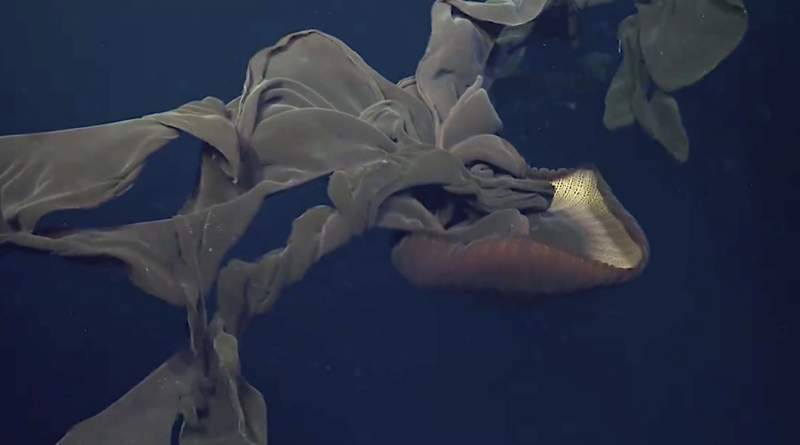The stunning deep sea footage scientists filmed in 2023
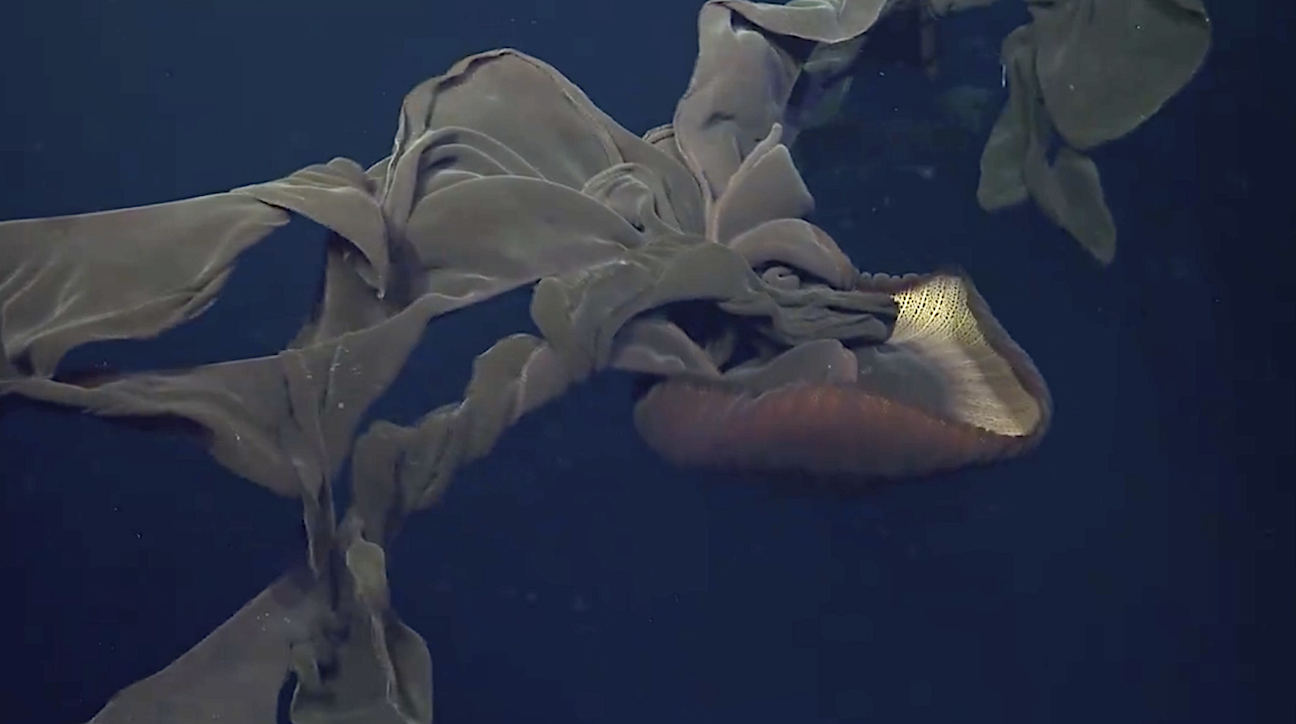
Below 1,000 meters, the ocean is eternally dark.
Sunlight can’t penetrate these depths, but with robotic explorers, scientists can temporarily illuminate this black realm, revealing a deep sea world teeming with tentacled, glowing, and almost alien life.
Here’s some of the most intriguing deep sea footage captured by scientists in 2023. Expeditions to the deeps regularly return with either profoundly rare or unprecedented sightings.
“We always discover stuff when we go out into the deep sea. You’re always finding things that you haven’t seen before,” Derek Sowers, an expedition lead for the National Oceanic and Atmospheric Administration’s Ocean Exploration mission, told Mashable last year.
The deepest fish ever captured on film
In a hostile realm of the ocean, where the pressure is over 830 times greater than on Earth’s surface, scientists spotted a fish casually swimming around.
It’s a curious-looking snailfish, and at 27,349 feet (8,336 meters) down, it’s the deepest fish ever observed. Researchers observed the critter on a deep sea expedition in the Izu-Ogasawara Trench, located south of Japan, after lowering a camera with bait down into the ocean’s “hadal zone.” This cryptic region is named for the Greek god of the underworld, and is home to the deepest of the seas. The record-breaking observation, announced in early April 2023, was made by scientists at the University of Western Australia and Tokyo University of Marine Science and Technology.
Even at such remote hadal depths, researchers noted that snailfish generally spotted in the region were a “large and somewhat lively population of fish.”
I asked Alan Jamieson, the chief scientist of this hadal expedition and founder of the Minderoo-UWA Deep Sea Research Centre, how he and his team reacted when they saw the record-breaking fish in the video. “In total admiration for how deep these little goofy fish can go,” Jamieson said.
Snailfish can resist extreme pressure, and have big mouths and stomachs to consume large prey — whenever it comes around.
10,000 feet down, scientists find “enormous” octopus colony
In the lightless deep sea, an octopus settlement thrives atop a tranquil volcano.
Scientists at the Monterey Bay Aquarium Research Institute sent a deep ocean robot to an “octopus garden” located some 10,500 feet (3,200 meters) below the ocean’s surface, in a dark marine region dubbed the “midnight zone.” Here, the only natural light comes from glowing critters.
The researchers captured high-resolution imagery, shown below, on a journey to the Davidson Seamount, located far off the California coast. They spotted a whopping 5,718 octopuses over a six-acre area, including 4,707 females nesting over their eggs.
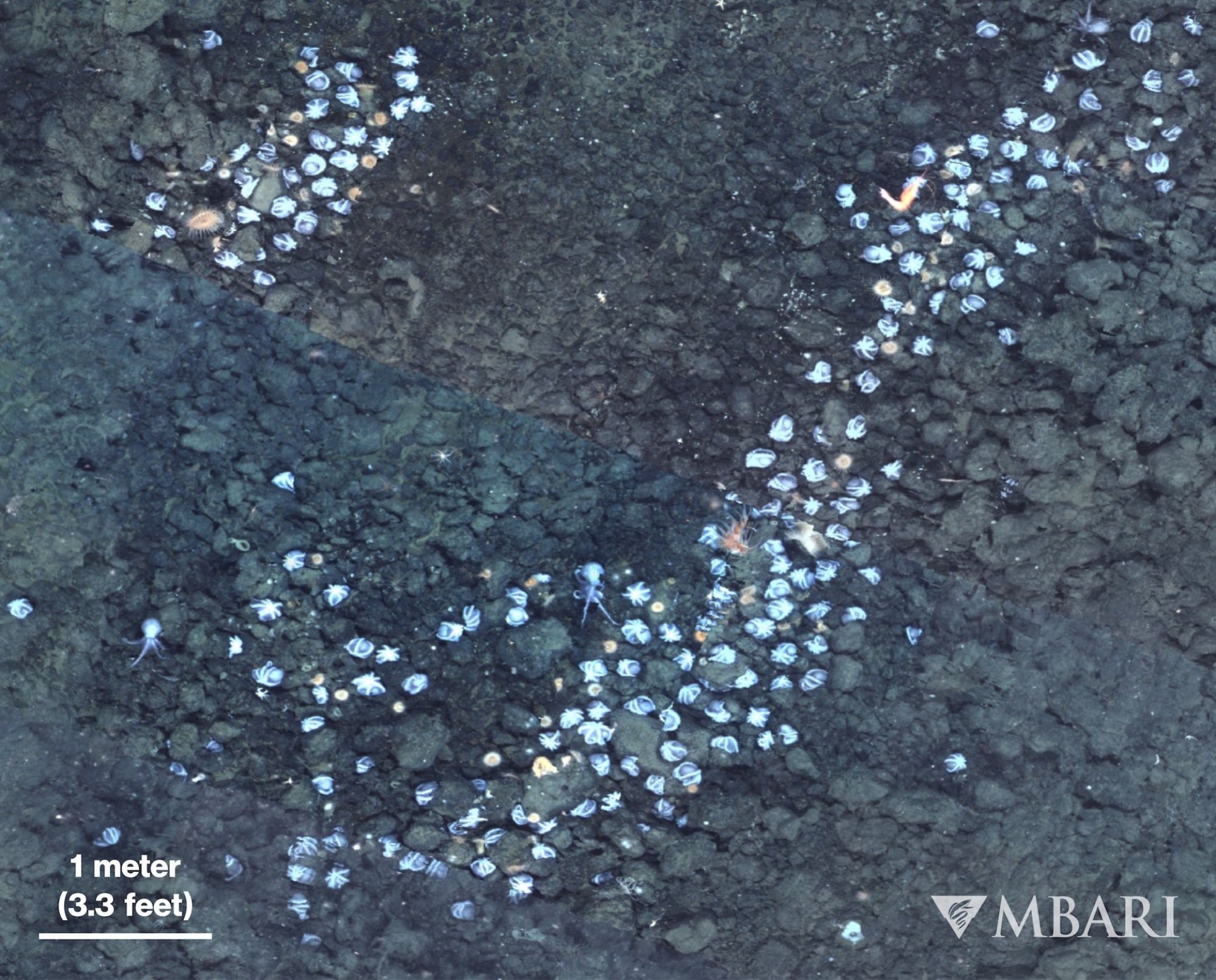
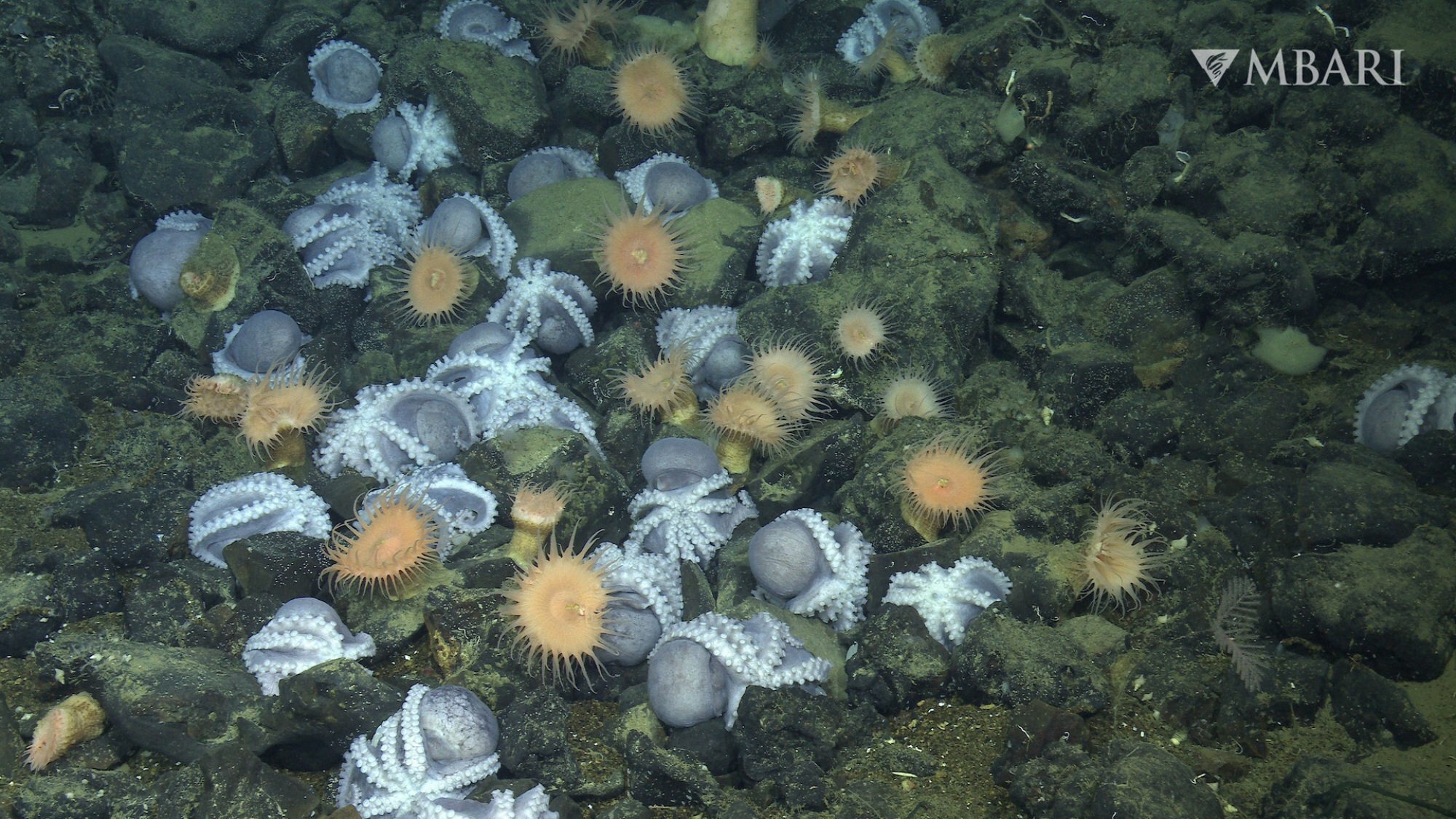
Scientists make eye-opening discovery in deep sea caves
A marine expedition to remote, previously unknown ocean caverns over 8,200 feet down revealed life thriving underneath hydrothermal vents — vents that emit hot, chemical-rich fluid into the water. This water, heated by the earth below, can support wild ocean ecosystems.
Ocean researchers embarked on this 30-day voyage to the East Pacific Rise (off of Central America) aboard the ship Falkor (too), a vessel operated by the Schmidt Ocean Institute, an organization that researches the seas. It’s the first time scientists successfully peered at what might lurk beneath hydrothermal vents.
“Using an underwater robot, the science team overturned chunks of volcanic crust, discovering cave systems teeming with worms, snails, and chemosynthetic bacteria living in 75 degrees Fahrenheit (25 degrees Celsius) water,” the institute said in a statement. “The discovery adds a new dimension to hydrothermal vents, showing that their habitats exist both above and below the seafloor.”
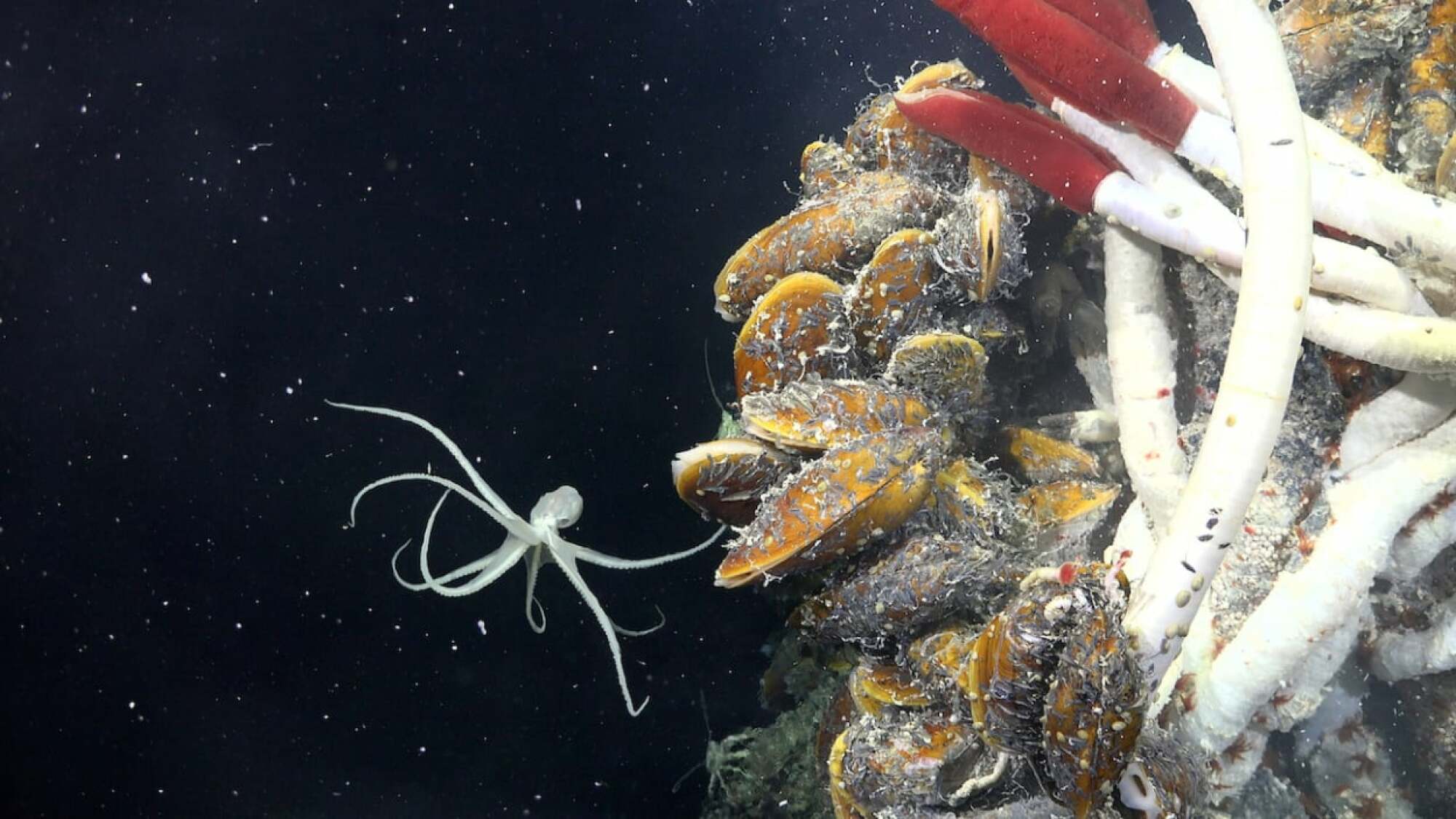
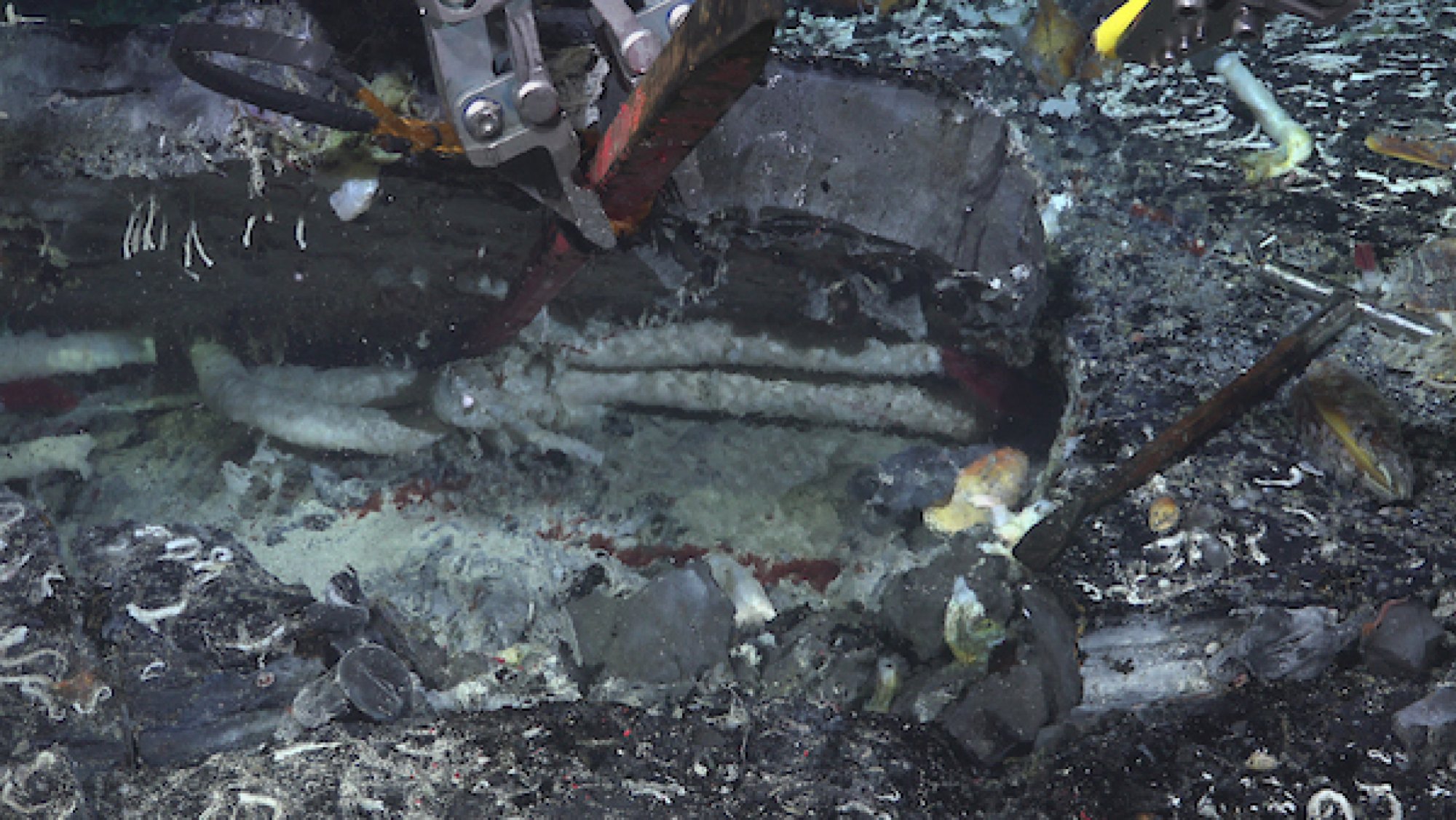
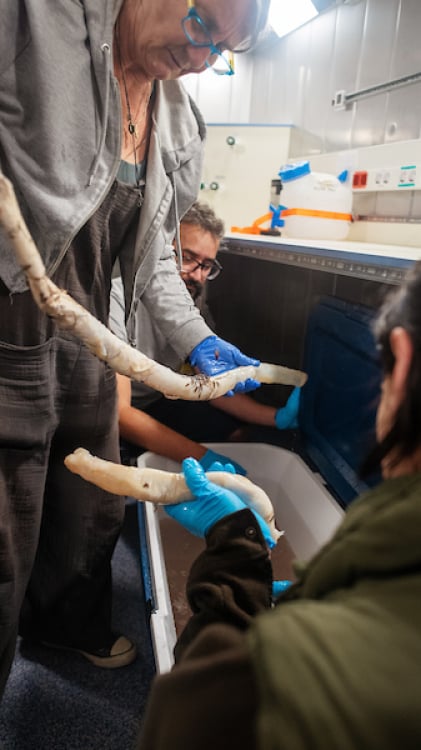
Astonishing deep sea giant
Giant phantom jellys don’t sting their prey. They wrap around them — with 30-foot-long arms.
Deep sea researchers aboard the Schmidt Ocean Institute’s sprawling vessel captured rare footage of a giant phantom jelly in Costa Rican waters. They used a remote-operating vehicle (ROV) to film the eerie ocean animal.
“#GiantPhantomJelly are rarely seen, so we were overjoyed to see this beauty in Costa Rican waters yesterday,” the nonprofit exploration organization posted on X, the site formerly called Twitter. “[With] their diet — and the fact they live in midnight zone far from humans — there’s no need to fear this awesome & delicate ghostly giant.”
These creatures usually dwell at 3,300 to 13,100 feet (1,000 to 4,000 meters) below the surface, a region appropriately dubbed the “midnight zone.”
The “ghostly” Dumbo octopus
The marine explorers Ocean Exploration Trust dropped a robot into the deep sea northwest of the Hawaiian islands. They captured this remarkable octopus.
“Looking appropriately ‘ghostly’ in front of our ROV Hercules’ camera, our Corps of Exploration spotted this cephalopod hovering above ROV Hercules as it explored the ocean floor 1,682 meters (5,518 feet, 920 fathoms) deep on an unnamed seamount in Papahānaumokuākea Marine National Monument,” the exploration group wrote. “Watch as this fan-favorite deep sea creature hovers delicately in front of our camera, reminding us of the beauty of this special place.”
A cryptic deep sea predator
In the remote Pacific Ocean near Kingman Reef, the Ocean Exploration Trust also stumbled upon just the second-ever scientific observation of this “mysterious gelatinous creature.”
“No, that’s not a face-hugger from the Alien films you see on your screen, but it sure is bizarre!” they wrote.
It turns out the organism is a still-undescribed species of jellyfish, within the genus Bathykoru.
“You never know what we’ll find when exploring the deep ocean in the Pacific Remote Islands!” the ocean explorers added.
Ocean research organizations are now vigilantly documenting and mapping the deep sea. Scientists want to shine a light — literally and figuratively — on what’s down there. The implications of knowing are incalculable, particularly as deep sea mineral prospectors prepare to run tank-like industrial equipment across parts of the seafloor. For example, research expeditions have found that ocean life carries great potential for novel medicines. “Systematic searches for new drugs have shown that marine invertebrates produce more antibiotic, anti-cancer, and anti-inflammatory substances than any group of terrestrial organisms,” notes the National Oceanic and Atmospheric Administration.
